| Took me much longer to write this post than the coach trip from Lijiang (day 1 & day 2) to Gyalthang, but finally here it is. The problem was not only my laziness, but also that I wasn't sure how to organise writing about the whole trip. I prefer to stick to the timeline in which I took the photos, but esp. for day 1 there was just too much. Therefore I decided to split the 3 days into 4 posts, with the 1st three corresponding to the days, & the 4th concentrating on the Ganden Sumtsenling Monastery, which we visited on day 1. | Brauchte länger für diesen Beitrag, als die Busreise von Lijiang (Tag 1 & Tag 2) nach Gyalthang, aber endlich ist er fertig. Lag nicht nur an meiner Faulheit, sondern auch daran, daß ich mir nicht sicher war, wie ich die Reise organisieren sollte. Bevorzuge es, nach dem zeitlichen Ablauf vorzugehen, aber speziell für Tag 1 war da einfach zuviel. Daher entschied ich, den Bericht in 4 Beiträge aufzuteilen, wobei die ersten 3 den Tagen entsprechen & der 4. sich nur mit dem Gamden-Sumtsenling-Kloster beschäftigen wird, welches wir schon am 1. Tag besuchten. |
|---|
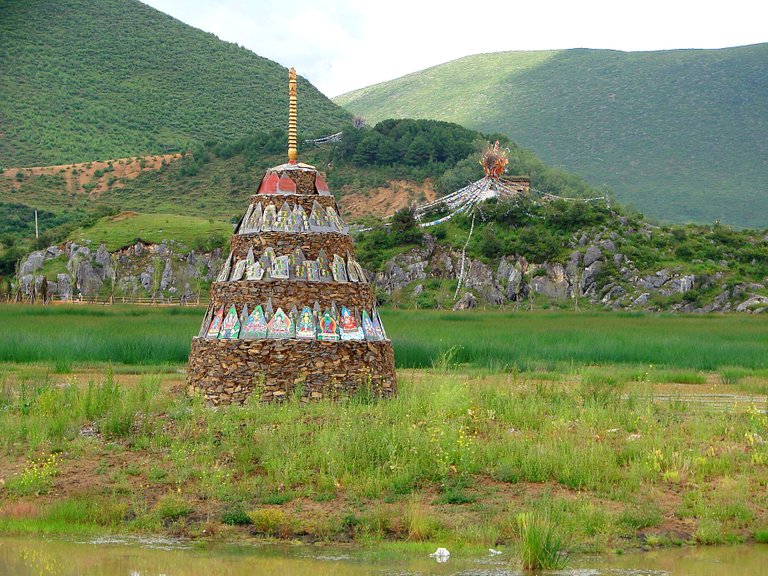
| Furthermore, reading up about Gyalthang also delayed the post, because it took the fun out of writing a bit. The original focus would have been something like: a visit to Tibet without the hassle of actually traveling to the Chinese province. But, well, it seems that Gyalthang is not so much Tibet, but a touristy, commercialised version of Tibet as the CCP would like it to be, a 'Tibetan toy town' (not my words). Anyway, the trip as such was very nice, so here it is. | Daneben hat auch zu Verzögerungen geführt, daß mich das Nachlesen über Gyalthang etwas der Lust am Schreiben beraubte. Eigentlich hätte das ursprünglich ein lockerer Bericht über einen Besuch in Tibet ohne die Probleme bei einer Reise in die Provinz werden sollen. Nur scheint es leider so zu sein, daß Gyalthang nicht wirklich Tibet ist, sondern ein kommerzialisierter Abklatsch nach den Wünschen der KPCh, eine Art tibetischer Spielzeugstadt. Der Besuch dort war aber dennoch sehr nett. |
|---|

| You can fly from Lijiang to Gyalthang, but that would be nonsensical. We took the coach which needs only roughly 4 hours. The landscape you go through is just great. My then-girlfriend & the other Chinese passengers were also fascinated, watching the very same landscape on a TV screen in the coach. Not one of them was looking out of the windows for any length of time. Sometimes I really don't get Chinese people. | Man kann von Lijiang aus nach Gyalthang fliegen, aber das wäre Blödsinn. Wir nahmen den Bus, der ungefähr 4 Stunden braucht. Die Landschaft, die man so sieht, ist einfach toll. Auch meine damalige Freundin & die anderen chinesischen Passagiere waren fasziniert davon, als sie es auf dem Fernseher im Bus sahen. Nicht ein einziger schaute mal für längere Zeit aus dem Fenster. Manchmal sind mir Chinesen ein echtes Rätsel. |
|---|
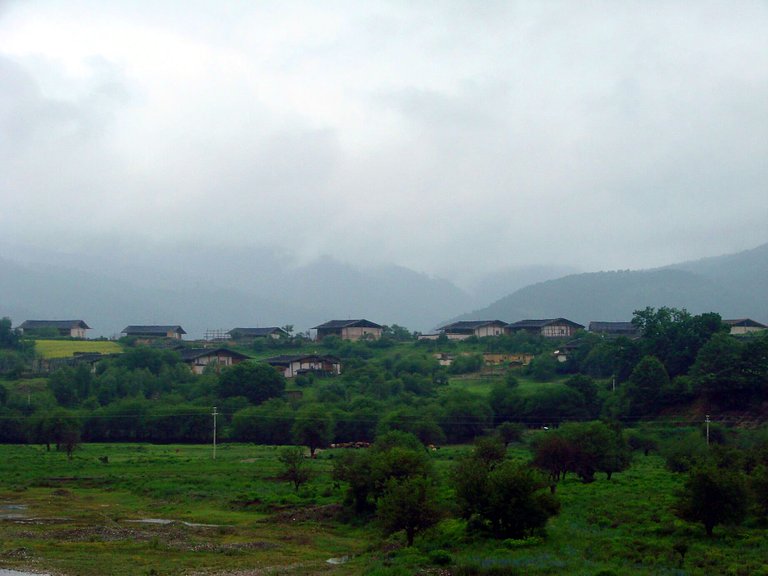
| If you are afraid of heights, you sometimes actually might want to avoid looking out of the window. The roads were often without guard rails running directly beside gorges. But the coach was going rather slowly, so no real sense of danger. Most of the way, there was not much sign of civilisation. The closer we got to Gyalthang, the more we saw. The houses there already showed a distinct Tibetan style (for what I know). | Nur wer Höhenangst hat, sollte vielleicht vermeiden, aus dem Fenster zu sehen. Die Straßen führen oft ohne Leitplanken direkt an Schluchten entlang. Aber der Bus fuhr recht langsam & es erschien in keinster Weise gefährlich. Den größten Teil des Weges gab es kaum Zeichen von Zivilisation. Aber je näher man Gyalthang kam, desto mehr Gebäude sah man, viele davon schon recht tibetisch anmutend (für meine Augen). |
|---|
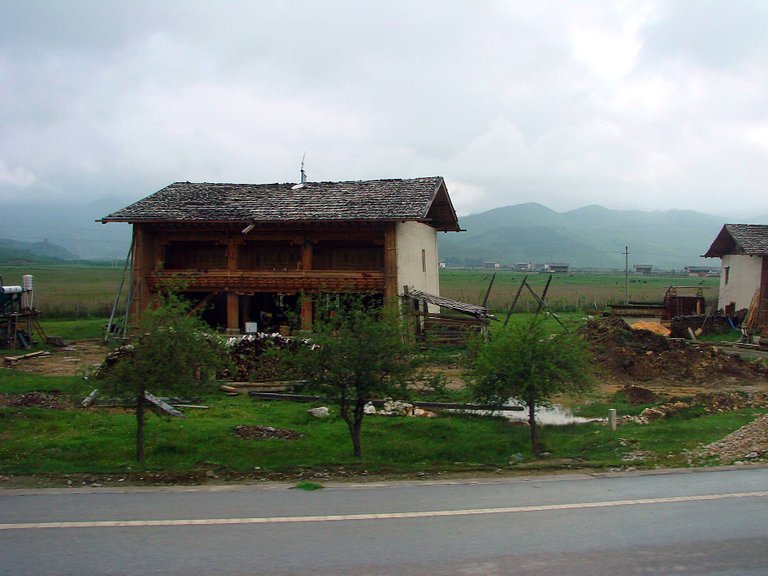
| Our hotel was near Tancheng Square, right beside the 'Deqen Culture Expo Center'. Nowadays it seems to hold a museum. We never entered the building, so I don't know whether the museum existed already in 2008. The square will feature prominently on day 3. | Unser Hotel befand sich in der Nähe des Tanchengplatzes, direkt neben dem 'Kulturausstellungszentrum'. Scheint heutzutage ein Museum zu enthalten. Wir waren nie drin, daher weiß ich nicht, was da 2008 war. Der Platz selber wird an Tag 3 im Mittelpunkt stehen. |
|---|

| Gyalthang lies in a heavily Tibetan-influenced area of North-West Yunnan with an elevation of almost 3400 m. China wants it to be known as Shangri-La (香格里拉, Xiānggélǐlā. Fun fact: Xianggelila is a loanword from the English Shangri-La.), but that's just for PR purposes. The town (city since 2014) has absolutely no relation to the fictional story the name is based on. The old Chinese name was Zhongdian (中甸, Zhōngdiàn). It has almost 150,000 inhabitants, some 40% of which are Tibetan. Roughly 20% are Han (actually probably more nowadays), 14% Nashi. Several other minorities live there, 5 of which have more than 1000 inhabitants. | Gyalthang liegt in einem stark tibetisch beeinflussten Gebiet in Nordwest-Yunnan auf einer Höhe von fast 3400m. China möchte es als Shangri-La (香格里拉, Xiānggélǐlā, übrigens ein Lehnwort aus dem Englischen) verkaufen, aber das ist nur Marketing. Die Stadt hat keinerlei Verbindung zu der fiktionalen Geschichte, auf der der Name basiert. Die alte chinesische Bezeichnung lautet Zhongdian (中甸, Zhōngdiàn). Es gibt fast 150.000 Einwohner, davon 40% Tibeter. Ungefähr 20% sind Han (heutzutage vermutlich mehr), 14% Nashi. Daneben gibt es mehrere andere Minderheiten, davon 5 mit mehr als 1000 Einwohnern. |
|---|
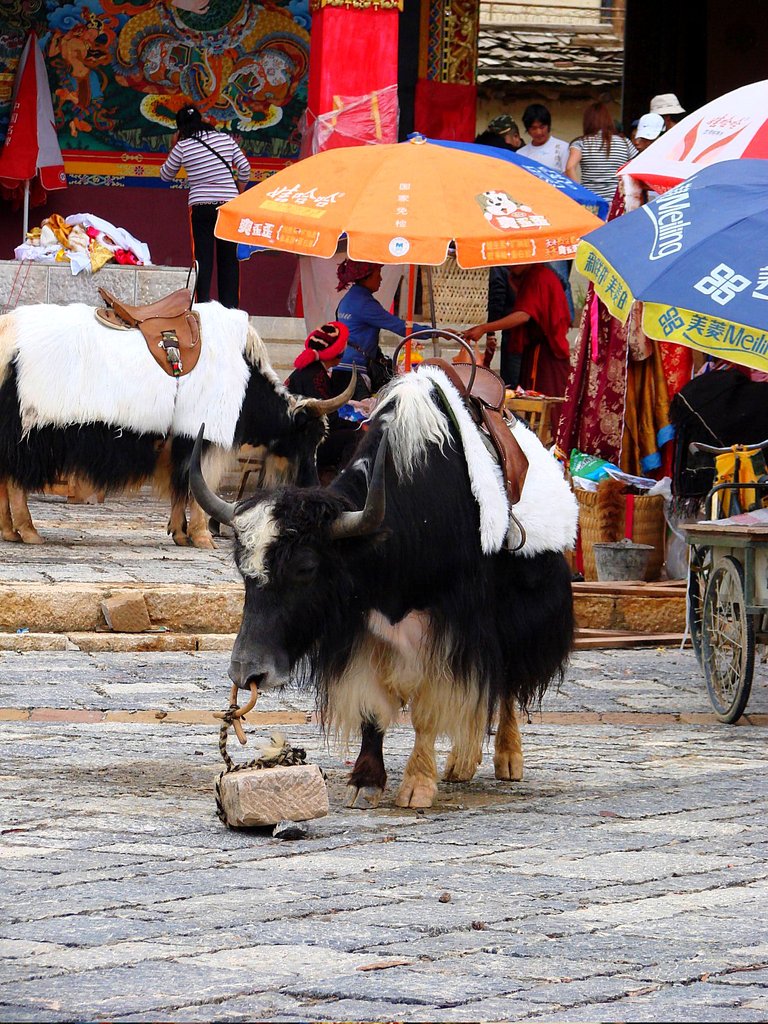
| In Lijiang, you can have a photo taken on a horse. In Gyalthang they use yaks for the same purpose. (The anchor is probably so that the yak doesn't float away.) | In Lijiang kann man sich auf einem Pferd fotografieren lassen. In Gyalthang gibt es dafür Yaks. (Der Anker hindert vermutlich das Yak am Davonschweben.) |
|---|
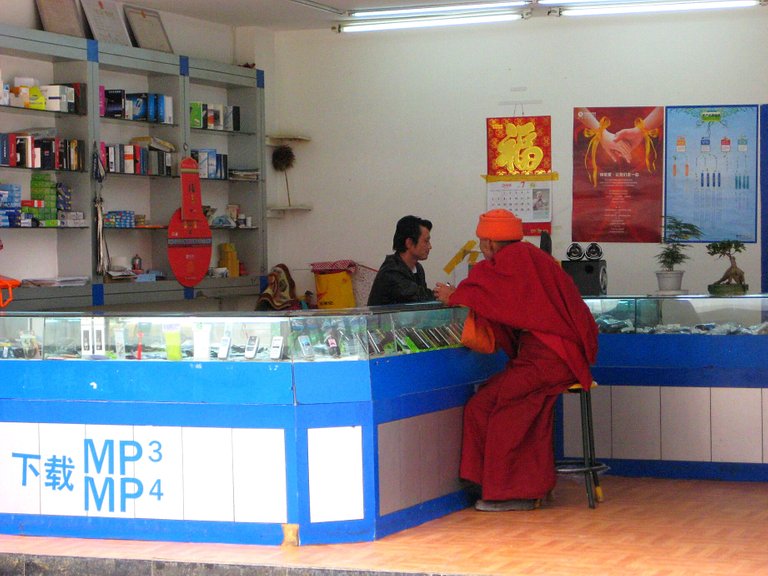
| Gyalthang is not the centre of Tibetan learning it once was, but is again home to the biggest Tibetan Buddhist monastery in Yunnan. Some 500 monks are supposedly living there. Hence it's no surprise to see them roaming around. For me, it was extraordinary enough to take a picture of a monk in a phone shop, though. | Gyalthang ist nicht mehr das Zentrum tibetischer Bildung, das es mal war, ist aber wieder Heimat des größten tibetisch-buddhistischen Klosters in Yunnan. Circa 500 Mönche sollen dort leben. Also keine Überraschung, daß man sie in den Straßen sieht. Für mich war es aber doch ungewöhnlich genug, daß ich einen Mönch im Telefonladen fotografierte. |
|---|
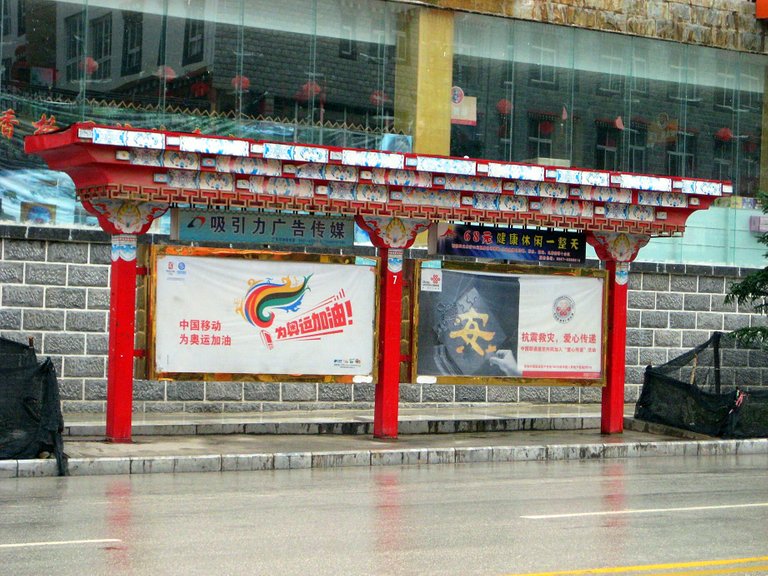
| A 'Tibetan' style bus stop. | Bushaltestelle 'tibetischen' Stils. |
|---|
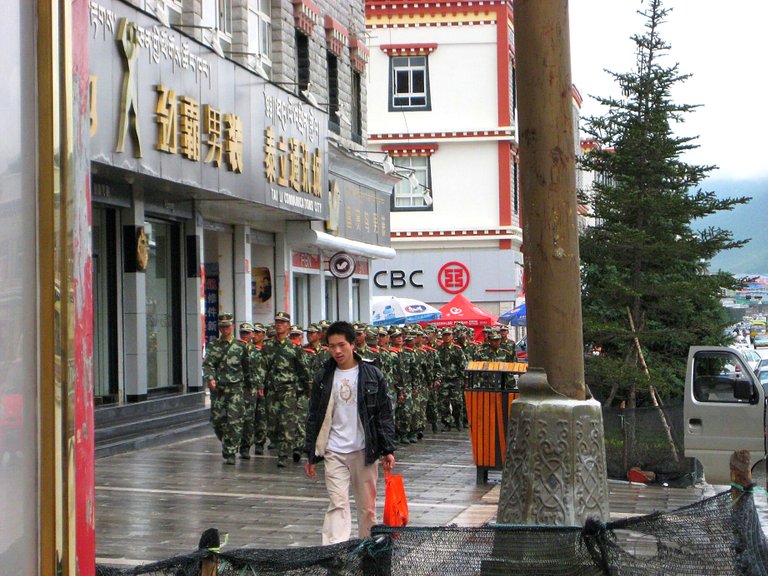
| The presence of a Tibetan minority obviously needs a great deal of authoritarian attention. | Die Anwesenheit einer tibetischen Minderheit benötigt offenbar ein Höchstmaß autoritärer Aufmerksamkeit. |
|---|
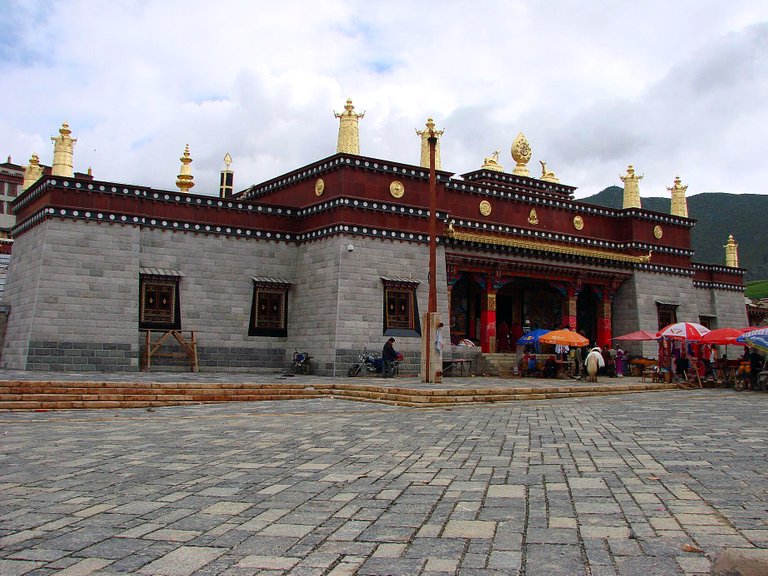
| Much of the first day, we spent walking through the Ganden Sumtsenling Monastery, which is quite a large complex. Above you see the entrance, where you have to pay a hefty entrance fee. Below you see the monastery behind. More about the monastery in the 4th post of the Gyalthang series. | Den größten Teil des ersten Tages verbrachten wir im Ganden-Sumtsenling-Kloster, einem gewaltigen Komplex. Oben sieht man den Eingang, wo man einen heftigen Eintrittspreis bezahlen muss. Unten sieht man das Kloster dahinter. Mehr darüber im 4. Beitrag dieser Gyalthangserie. |
|---|
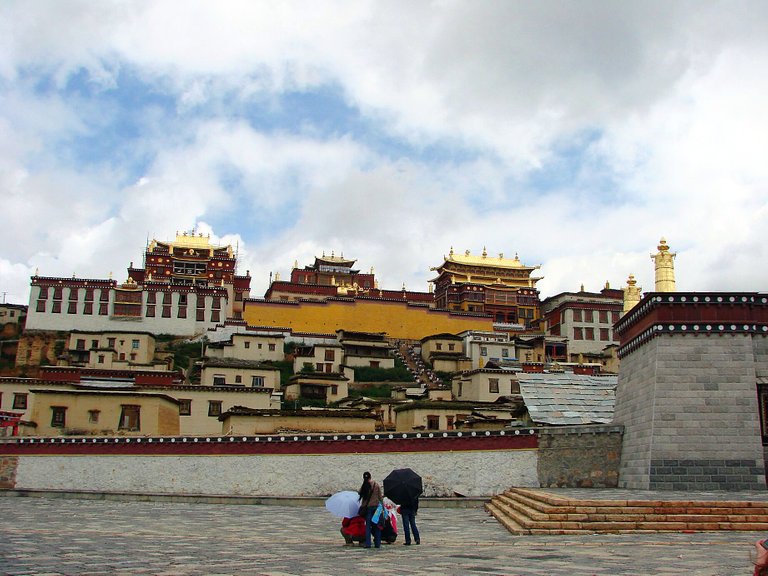
| Beside the monastery is this rather basic stupa (at least I think it is one). In the background you see some Lung ta prayer flags. The latter can be found everywhere in Tibetan areas. The prayers & mantras on them supposedly spread good will & compassion via the wind. | Neben dem Kloster ist dieser recht einfache Stupa (glaube jedenfalls, daß es einer ist). Im Hintergrund sieht man Lung-ta-Gebetsfahnen. Diese sieht man überall in tibetischen Gegenden. Die Gebete & Mantras darauf sollen guten Willen & Mitgefühl mit dem Wind verbreiten. |
|---|
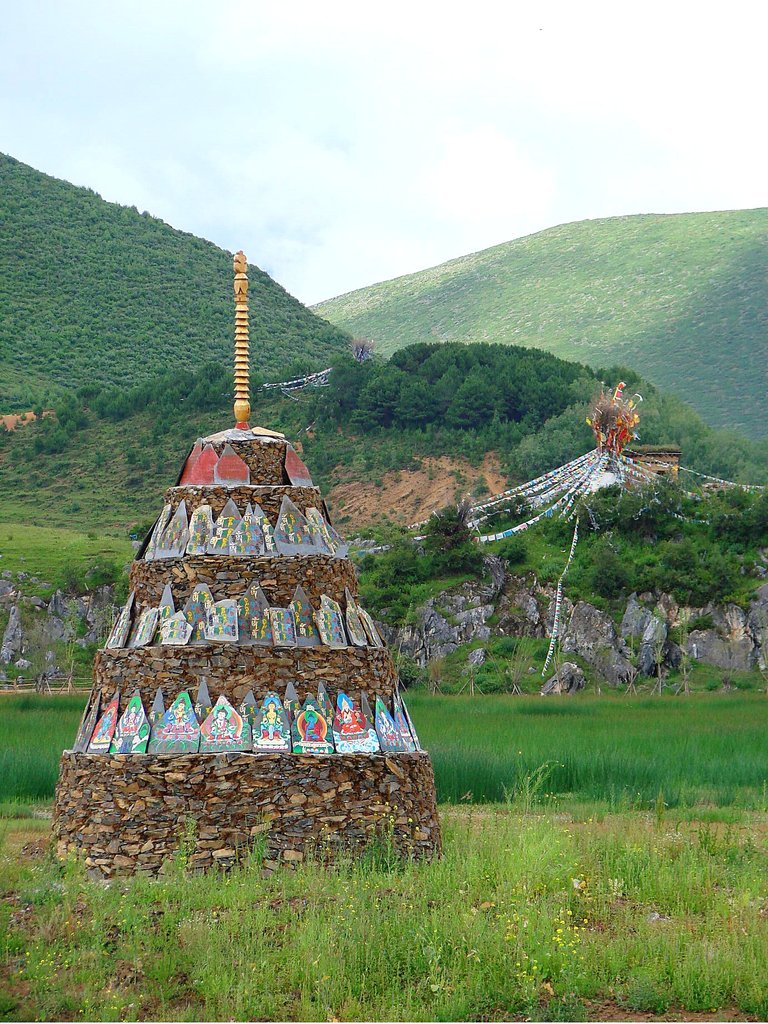
| From the monastery you have a good view over the landscape & over the town of Gyalthang. The whole area is very nice to just walk around. Just don't expect anything authentic Tibetan. Almost everything in Gyalthang was built after 1980 with tourism in mind. The 'old town' has been paved in the style of Lijiang to make it look 'more authentic'. Buildings in the style of the Nashi minority have been remodelled to look more Tibetan. | Vom Kloster aus hat man einen guten Überblick über die Landschaft & den Ort. Die ganze Gegend bietet sich für Spaziergänge & Wanderungen an. Man sollte nur nicht allzuviel authentisch Tibetisches erwarten. Fast alles in Gyalthang wurde nach 1980 für den Tourismus gebaut. Die 'Altstadt' wurde im Stile Lijiangs gepflastert, um sie echter aussehen zu lassen. Gebäude auf Nashi-Art wurden umgebaut, um sie eher tibetisch erscheinen zu lassen. |
|---|
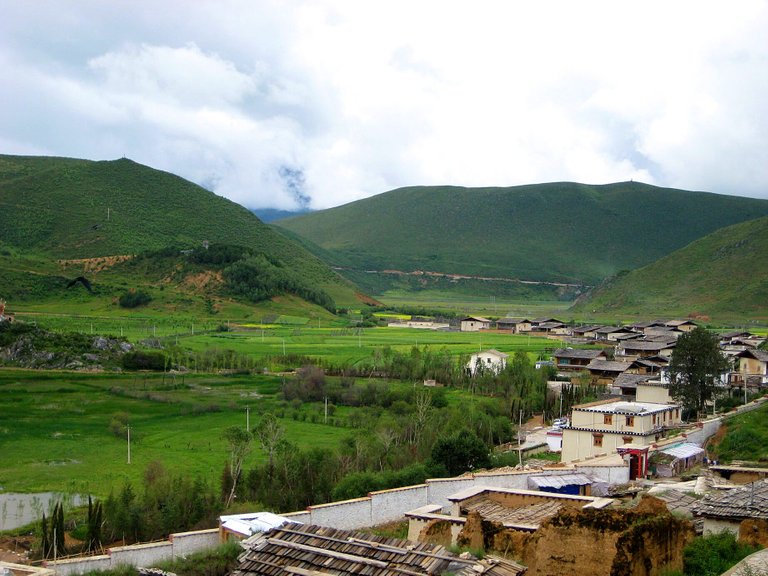
| The local government also ruled that all shops & restaurants needed to have Tibetan writing beside the Chinese one. Which didn't work out so well, because the local Tibetan language spoken is very different from the Lhasa variety & most Tibetans in the area never learned to write standard Tibetan (partially because of the destruction during the Cultural Revolution, when most monks were driven away & many of the more educated Tibetans were killed or committed suicide). Therefore, there seems to be a sort of Chinglish-effect. | Die Lokalregierung verfügte auch, daß alle Läden & Restaurants neben chinesisch auch tibetisch beschriftet werden müssen. Was nicht so richtig funktionierte, da die lokale tibetische Sprache anders als die in Lhasa gesprochene ist & die meisten Tibeter dort nie lernten, Standardtibetisch zu schreiben (teils wegen der Zerstörungen während der Kulturrevolution, als die meisten Mönche vertrieben wurden & viele der gebildeten Tibeter getötet wurden oder Selbstmord begingen.) Es gibt eine Art Chinglish-Effekt. |
|---|
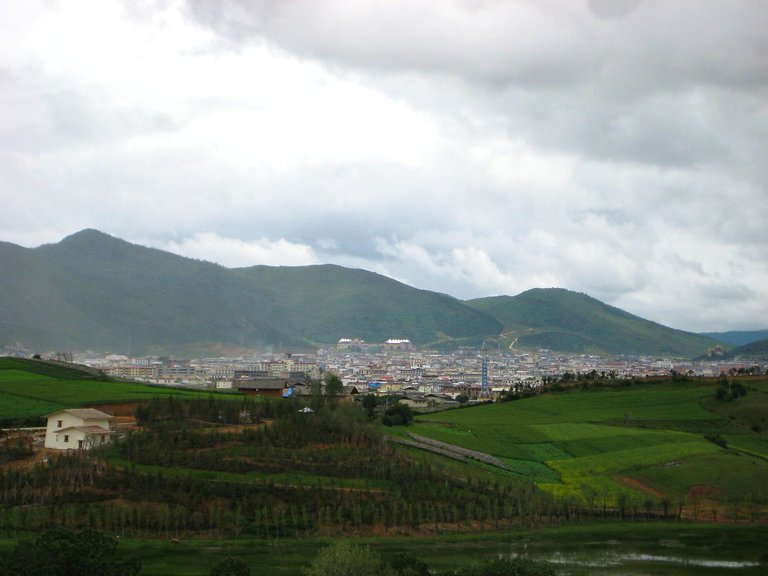
| Similarly to what happened in Lijiang, many Tibetan residents of the old town rented out their property to Han-Chinese business people, while they themselves moved to other parts of town. The old town is accordingly just a big souvenir shopping centre, just like Lijiang. We were lucky, though, because back in 2008 it was not yet quite so bad. There were not too many tourists & it was very nice just to walk around town. | Ähnlich wie in Lijiang vermieteten viele Tibeter ihren Besitz in der Altstadt an han-chinesische Händler, während sie selber in andere Stadtteile zogen. Die Altstadt ist heute dementsprechend ein riesiges Einkaufszentrum, wie in Lijiang. Wir hatten aber Glück, denn in 2008 war es noch nicht so schlimm. Es gab nicht allzuviele Touristen & es war sehr angenehm, durch die Stadt zu spazieren. |
|---|
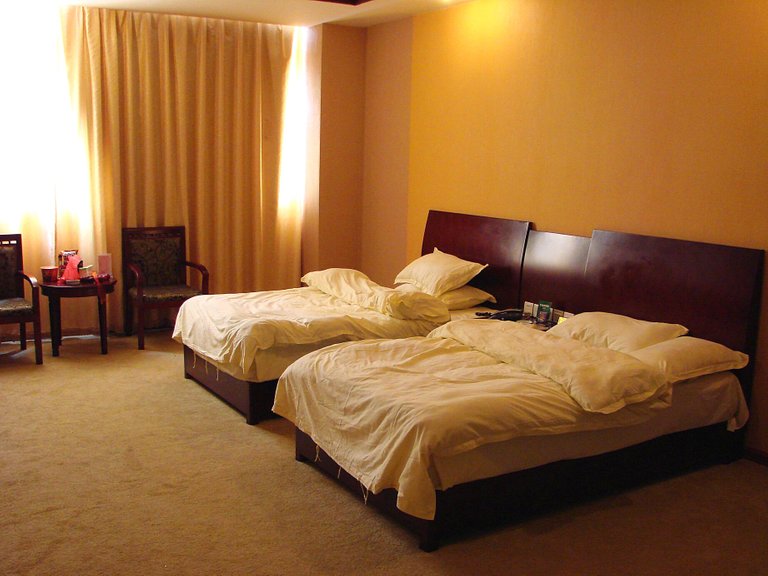
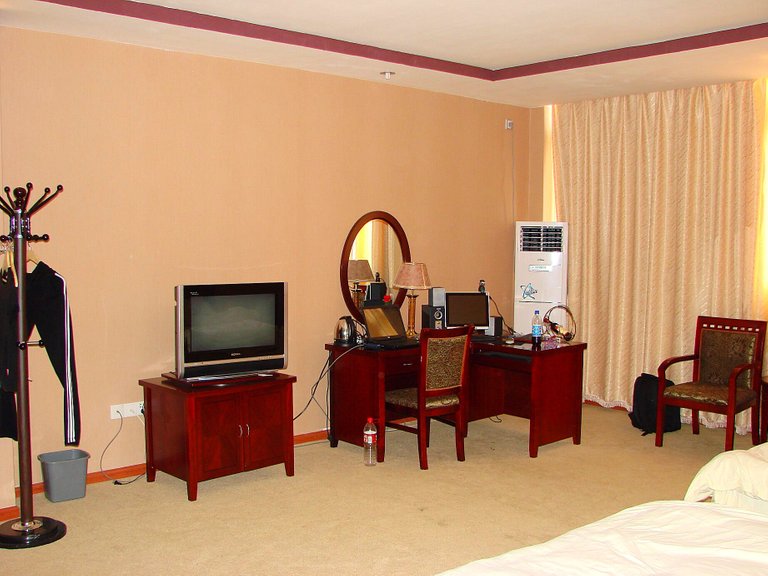
| It seems that when there is no Chinese holiday, the town is still not overrun & you can get cheap hotel rooms near the old town. Just like our hotel back then, which was very nice. I only took the pictures at the end of the 1st day, so we had already settled in. Sorry for the mess. | Wie es scheint, ist Gyalthang auch heute noch nicht überlaufen, wenn nicht gerade Goldene Woche ist, & man kann auch nahe der 'Altstadt' noch billige Hotelzimmer finden. Wie unser Hotel damals, das sehr nett war. Die Fotos machte ich leider erst am Ende des 1. Tages, als wir uns schon eingerichtet hatten. Sorry für das Durcheinander. |
|---|

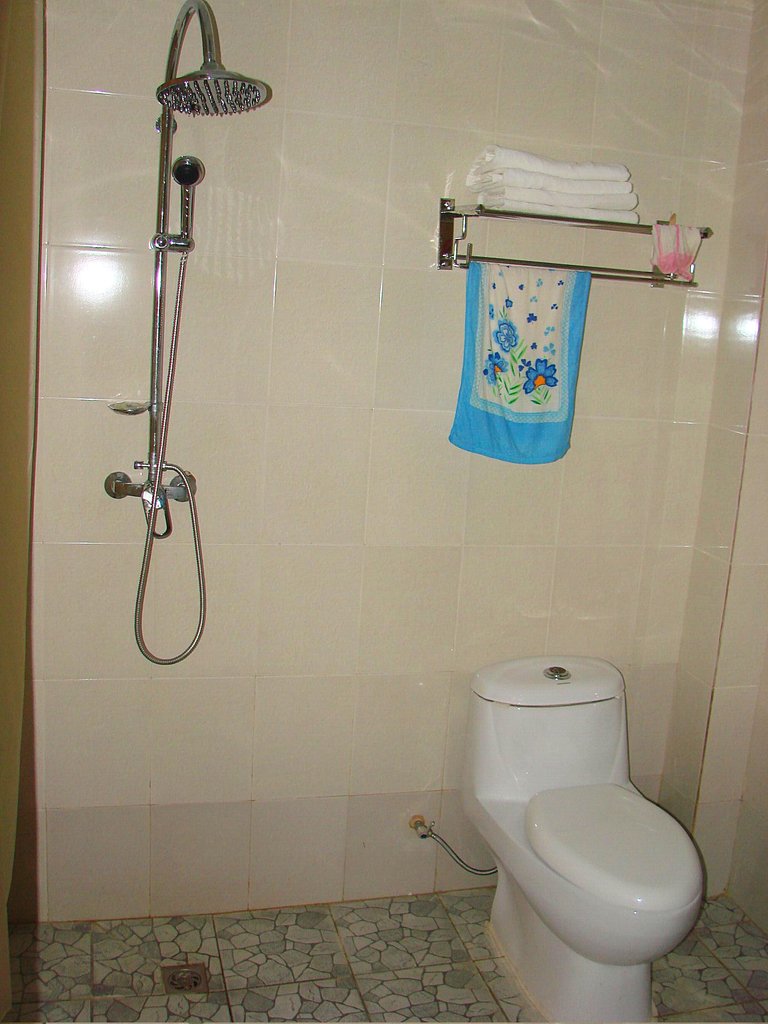
| I'm not sure whether that hotel still exists as such, but in pretty much the same place there is a hotel now which looks quite decent, pretty similar to ours back in 2008. The rooms cost well below 200 RMB per night (weekdays, no Chinese holiday). | Weiß nicht, ob das Hotel als solches noch existiert, aber ziemlich genau da, wo es damals war, gibt es auch jetzt eins, das ordentlich aussieht, ähnlich dem unseren in 2008. Die Zimmer kosten deutlich unter 200 RMB pro Nacht (wochentags). |
|---|

| Another fun fact: The Second Division of the Red Army came through Gyalthang in 1936 during the Long March. | Kleines Detail am Rande: Die 2. Division der Roten Armee zog auf dem Langen Marsch 1936 durch Gyalthang. |
|---|
| Next time out, we visited the Golden Temple, but for now, just a few more pics: | Beim nächstenmal besuchen wir den Goldenen Tempel, doch jetzt nur noch ein paar Bilder: |
|---|

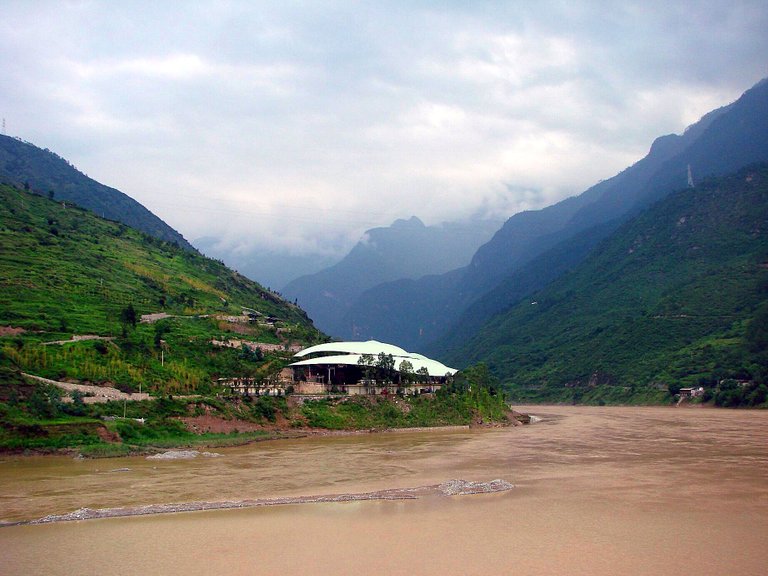
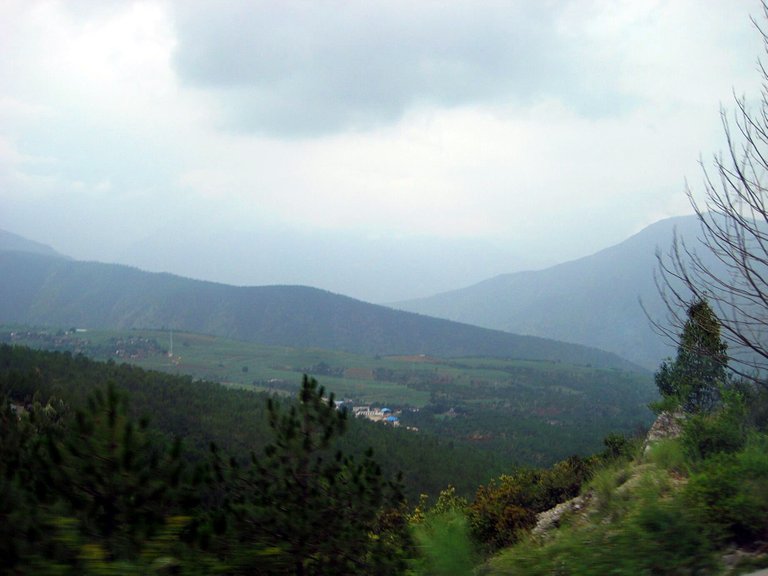
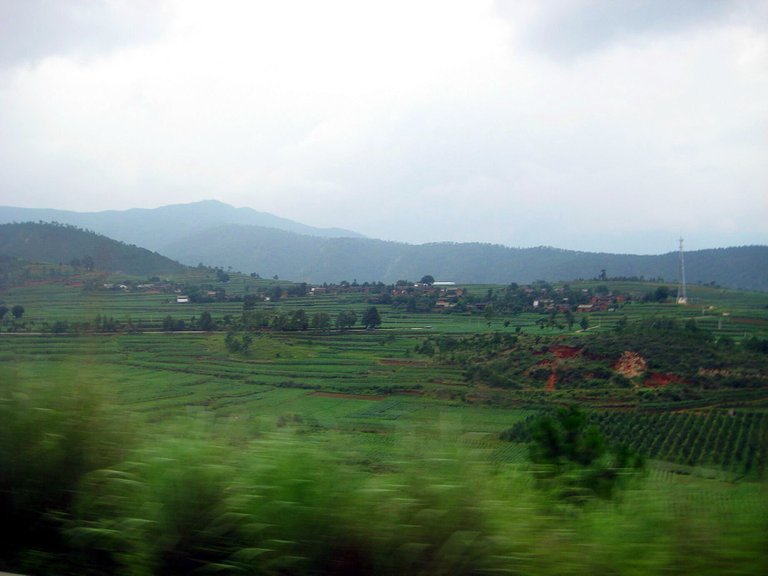
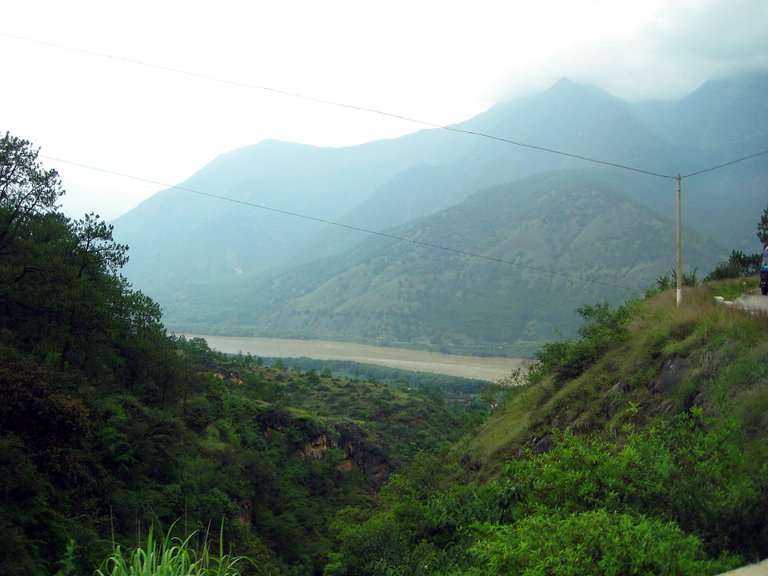
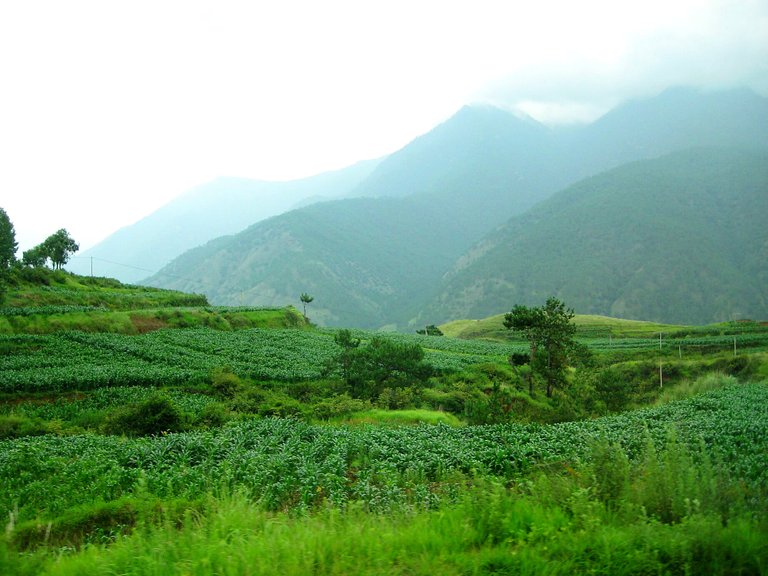
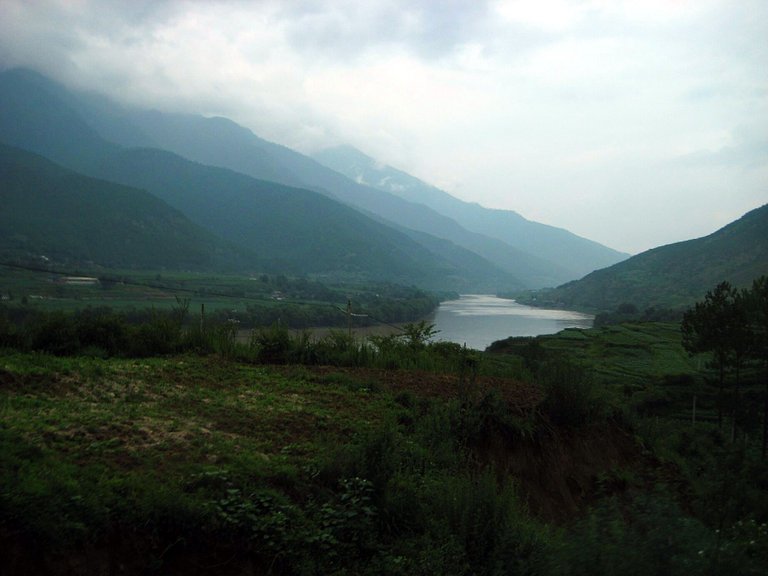
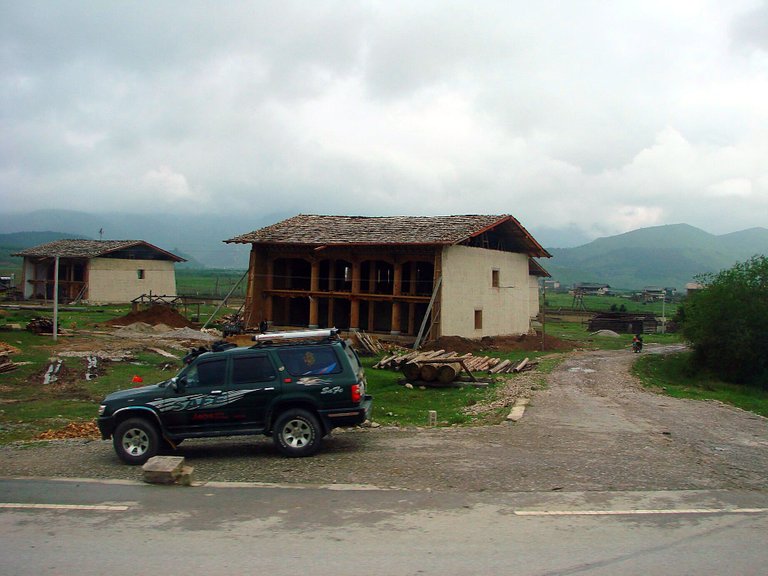
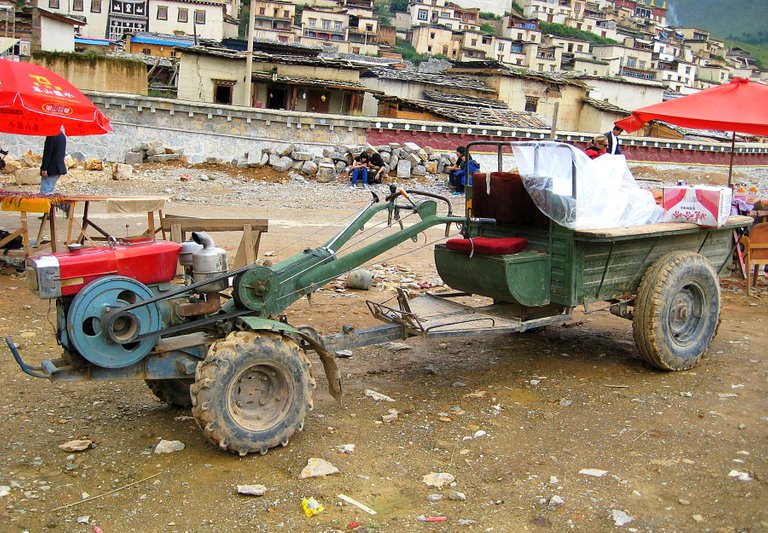






























Bin wie immer begeistert von deinem Post.
LG Michael
!invest_vote
!jeenger
Danke Dir!
Congratulations @bossel, You Earned 0.645 TAN & Curators Made 0.451 TAN.
Join CORE / VAULT Token Discord Channel or Trade TANGENT Token
TAN Current Market Price : 2.540 HIVE
Great travel post! Thanks for sharing with us! 😊
Thank you!
@mima2606 denkt du hast ein Vote durch @investinthefutur verdient!
@mima2606 thinks you have earned a vote of @investinthefutur !
Your contribution was curated manually by @mima2606
Keep up the good work!
$tangent
Congratulations, @minnowspower You Successfully Trended The Post Shared By @bossel.
You Utilized 2/3 Daily Summon Bot Calls.
TAN Current Market Price : 1.940 HIVE
Hiya, @ybanezkim26 here, just swinging by to let you know that this post made it into our Top 3 in Daily Travel Digest #1064.
Your post has been manually curated by the @pinmapple team. If you like what we're doing, please drop by to check out all the rest of today's great posts and consider supporting other authors like yourself and us so we can keep the project going!
Become part of our travel community:
Thank you!
Congratulations, your post has been added to Pinmapple! 🎉🥳🍍
Did you know you have your own profile map?
And every post has their own map too!
Want to have your post on the map too?